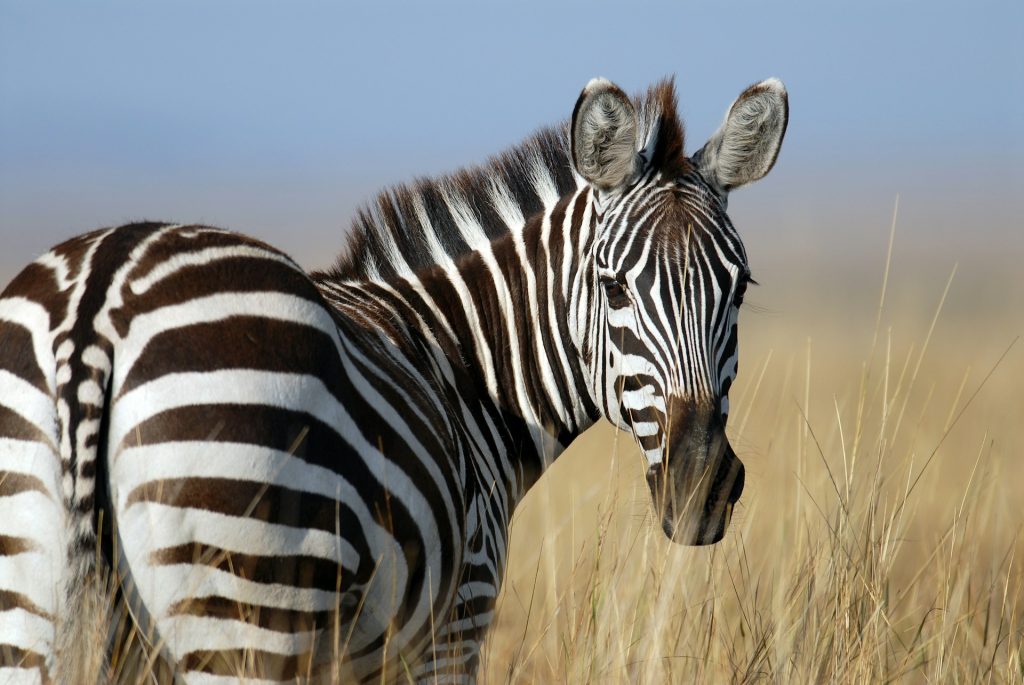Contrary to popular belief, zebras are not simply white animals with black stripes; they are black animals with white stripes. Each zebra’s stripes are as unique as a fingerprint, adding an air of mystique to these iconic creatures. But what purpose do these distinctive patterns serve?

1. The Art of Camouflage: A Predator’s Illusion
In the vast expanse of the African savannah, the zebra’s black and white stripes serve as nature’s camouflage, blending seamlessly with the grasses and brush that populate their habitat. While lions, the zebra’s primary predator, may be color blind, the stripes create a visual disruption that makes individual zebras harder to distinguish within a herd. This optical illusion confounds predators, making it challenging for them to target a single zebra for attack.
2. Beyond Camouflage: Exploring Alternative Theories
Recent studies have challenged the traditional camouflage theory, suggesting that zebra stripes may serve multiple purposes beyond predator evasion. Researchers have noted a correlation between the number of stripes and environmental factors such as temperature and precipitation, sparking new hypotheses about their functionality.

3. Cool Stripes: The Temperature Regulation Hypothesis
One emerging theory posits that zebra stripes aid in regulating body temperature, particularly in warmer climates. As air moves more swiftly over black stripes and slower over white stripes, a swirling airflow pattern forms at the junction, potentially enhancing heat dissipation and cooling the zebra’s skin. This natural air conditioning mechanism could be vital for zebras’ survival in hot environments.
4. Shielding Against Pesky Pests: The Fly Deterrence Theory
Another intriguing possibility is that zebra stripes act as a deterrent against biting flies, such as tsetse flies and horseflies, which thrive in warm weather. Research suggests that these blood-sucking insects avoid landing on striped surfaces, leading to the hypothesis that the increased presence of stripes in warmer regions serves as a defense mechanism against these disease-carrying pests.

While the question of why zebras have stripes remains a subject of ongoing scientific inquiry, one thing is clear: nature’s palette holds countless secrets waiting to be discovered. As researchers continue to unravel the mysteries of zebra stripes, we gain a deeper appreciation for the intricate balance of form and function that characterizes the natural world. Through their striking patterns, zebras remind us that even the most enigmatic mysteries can be found in the simplest of places.





